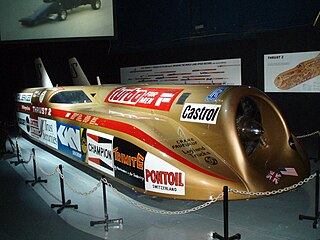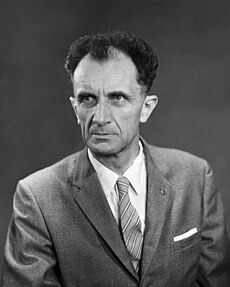
Aerodynamics, from Greek ἀήρ aero (air) + δυναμική (dynamics), is the study of the motion of air, particularly when affected by a solid object, such as an airplane wing. It involves topics covered in the field of fluid dynamics and its subfield of gas dynamics.The term aerodynamics is often used synonymously with gas dynamics, the difference being that "gas dynamics" applies to the study of the motion of all gases, and is not limited to air. The formal study of aerodynamics began in the modern sense in the eighteenth century, although observations of fundamental concepts such as aerodynamic drag were recorded much earlier. Most of the early efforts in aerodynamics were directed toward achieving heavier-than-air flight, which was first demonstrated by Otto Lilienthal in 1891. Since then, the use of aerodynamics through mathematical analysis, empirical approximations, wind tunnel experimentation, and computer simulations has formed a rational basis for the development of heavier-than-air flight and a number of other technologies. Recent work in aerodynamics has focused on issues related to compressible flow, turbulence, and boundary layers and has become increasingly computational in nature.

Supersonic speed is the speed of an object that exceeds the speed of sound (Mach 1). For objects traveling in dry air of a temperature of 20 °C (68 °F) at sea level, this speed is approximately 343.2 m/s. Speeds greater than five times the speed of sound (Mach 5) are often referred to as hypersonic. Flights during which only some parts of the air surrounding an object, such as the ends of rotor blades, reach supersonic speeds are called transonic. This occurs typically somewhere between Mach 0.8 and Mach 1.2.

The sound barrier or sonic barrier is the large increase in aerodynamic drag and other undesirable effects experienced by an aircraft or other object when it approaches the speed of sound. When aircraft first approaches the speed of sound, these effects are seen as constituting a barrier, making faster speeds very difficult or impossible. The term sound barrier is still sometimes used today to refer to aircraft approaching supersonic flight in this high drag regime. Flying faster than sound produces a sonic boom.

ThrustSSC, Thrust SSC or Thrust SuperSonic Car is a British jet car developed by Richard Noble, Glynne Bowsher, Ron Ayers, and Jeremy Bliss.

Thrust2 is a British designed and built jet propelled car, which held the world land speed record from 4 October 1983 to 25 September 1997.

Richard James Anthony Noble, OBE is a Scottish entrepreneur who was holder of the land speed record between 1983 and 1997. He was also the project director of ThrustSSC, the vehicle which holds the current land speed record, set at Black Rock Desert, Nevada in 1997.
Wing Commander Andrew Duncan Green is a British Royal Air Force fighter pilot and World Land Speed Record holder since 1997, the first land speed record to break the sound barrier.
Dietrich Küchemann CBE FRS FRAeS was a German aerodynamicist who made several important contributions to the advancement of high-speed flight. He spent most of his career in the UK, where he is best known for his work on Concorde.

The JCB Dieselmax is a diesel-engined 'streamliner' car designed for the purpose of breaking the land speed record for a diesel-engined vehicle.
Rosco McGlashan OAM is an Australian drag racing record-holder, who currently holds the Australian land speed record at 500 mph (802.6 km/h). This record was set on the 27 March 1994 on the dry salt flats of Lake Gairdner, South Australia 440 km (270 mi) northwest of Adelaide.

The North American Eagle Project was a jet powered car that was intended to challenge the 763 mph (1,228 km/h) land speed record set by the ThrustSSC in 1997. The venture was a collaboration between Canadian and US engineers, pilots, and mechanics. In 2013, they had hoped to reach 800 mph (1,287 km/h), or Mach 1.058.

Adolf Busemann was a German aerospace engineer and influential Nazi-era pioneer in aerodynamics, specialising in supersonic airflows. He introduced the concept of swept wings and, after emigrating in 1947 to the United States under Operation Paperclip, invented the shockwave-free supersonic Busemann biplane.

The Handley Page HP.115 was a experimental delta wing aircraft designed and produced by the British aircraft manufacturer Handley Page. It was built to test the low-speed handling characteristics to be expected from the slender delta configuration anticipated for a future supersonic airliner.

The Oldsmobile Aerotech was a series of experimental high-speed vehicles manufactured between 1987 and 1992 incorporating the latest in performance technology with the intention of breaking multiple automobile speed records. The first such car was driven by four-time Indy 500 winner A. J. Foyt to a world closed-course speed record of 257.123 mph (413.788 km/h) on August 27, 1987 at the 7.712-mile (12.411 km) test track near Fort Stockton Texas. Prior to this, on August 26, 1987, the car had posted a top speed over a mile of 267.88 mph (431.10 km/h).
Bloodhound LSR, formerly Bloodhound SSC, is a British land vehicle designed to travel at supersonic speeds with the intention of setting a new world land speed record. The arrow-shaped car, under development since 2008, is powered by a jet engine and will be fitted with an additional rocket engine. The initial goal is to exceed the current speed record of 763 mph (1,228 km/h), with the vehicle believed to be able to achieve up to 1,000 miles per hour (1,609 km/h).
Daniel Jubb is a British rocket scientist. In a 17 November 2008 article from the British newspaper The Times, he was named "one of the world's leading rocket scientists", by the Royal Air Force Wing Commander Andy Green.

The Yakovlev Yak-1000 was a Soviet supersonic technology demonstrator intended to evaluate the aerodynamic layout and field performance of the cropped delta wing discussed in captured German documents in combination with the new Lyulka AL-5 turbojet. The tandem undercarriage proved to be unsatisfactory and there were serious flight stability problems related to the delta wing, enough so that it never flew after an accident during taxiing tests.
Aerodynamics is a branch of dynamics concerned with the study of the motion of air. It is a sub-field of fluid and gas dynamics, and the term "aerodynamics" is often used when referring to fluid dynamics

Johanna Weber was a German-born British mathematician and aerodynamicist. She is best known for her contributions to the development of the Handley Page Victor bomber and the Concorde.
Raymond Frederick Creasey OBE was a British aerodynamicist with BAC in the 1960s. He was responsible for the aerodynamics of the Lightning interceptor aircraft.